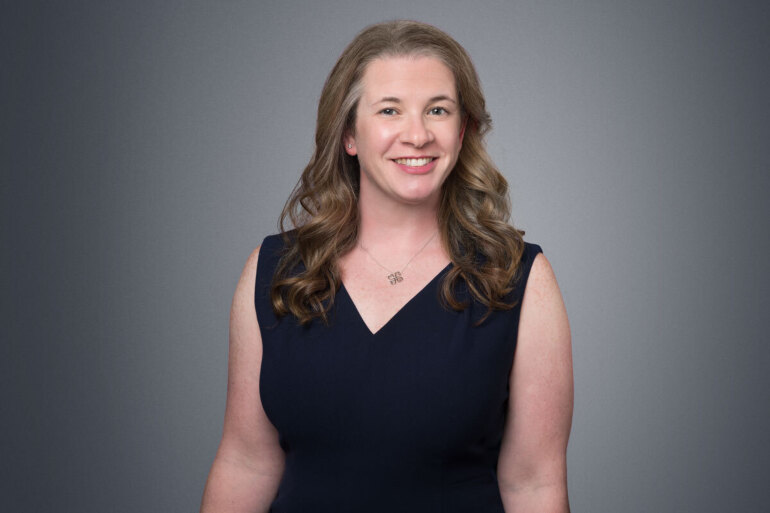News & Insights
Legal Alert

California’s Density Bonus Law Prevails with Recent Win in San Diego
Land Use
1.25.22
A January 7, 2022, published decision from California’s Fourth District Court of Appeal in Bankers Hill 150 v. City of San Diego (Case No. D077963) confirms local agencies’ limited discretion to deny – or require a redesign – of qualifying projects under California’s Density Bonus Law. Allen Matkins attorneys, Heather Riley, Jeff Chine, and Becca Williams, secured the winning decision, which should serve as a warning to any local agencies attempting to evade the Density Bonus Law, and a reminder of their obligation to approve density bonus projects as designed.
Background of California’s Density Bonus Law
Government Code section 65915, commonly referred to as the “Density Bonus Law,” (DBL) was first enacted in 1979 with the aim to address a housing shortage in California. Among other benefits, the DBL provides that developers who agree to include a specific percentage of affordable housing units in a project are entitled to:
- A density bonus, which allows for additional units, above the maximum allowed by zoning;
- A certain number of incentives and concessions, i.e. “reduction in site development standards or a modification of zoning code requirements or architectural design requirements that exceed the minimum building standards . . . [and result] in identifiable and actual cost reductions” (Gov. Code § 65915(k)(1)); and
- A waiver or reduction of any development standards that would have the effect of physically precluding the construction of a DBL-compliant project (Gov. Code § 65915(e)(1)).
The DBL provides very limited exceptions to its requirements and places the burden on a local agency to establish an exception applies. For example, a concession or incentive may be refused if the local agency can establish the request would not result in identifiable and actual cost reductions to provide for affordable housing costs. (Gov. Code § 65915(d)(1)(A).) The only other exceptions require a local agency to find, based on substantial evidence, that the requirement: (1) would have “a specific, adverse impact . . . upon public health and safety;” (2) would have an adverse impact on any historic resource; or (3) would be contrary to state or federal law. (Gov. Code §§ 65915(d)(1)(B)-(C), 65915(e)(1).)
The Challenged Project
In Bankers Hill 150, the developer, Greystar GP II, LLC (Greystar) submitted an application to build 6th and Olive, a 20-story, mixed-use project in the Bankers Hill neighborhood of San Diego, just west of the City’s historic Balboa Park. The proposed Project included 204 dwelling units, 16,190 square feet of office space for the nearby St. Paul’s Cathedral, and a 10,600 square foot courtyard to be shared by St. Paul’s Cathedral and Project residents.
Because the Project set aside 18 dwelling units as affordable for very low-income residents, it qualified for a density bonus and related incentives. With its density bonus, Greystar exceeded the maximum zoned capacity of 147 dwelling units by an additional 57 units, and requested three development incentives, including a deviation from the 15-foot minimum setback requirement along Olive Street, to the north of the Project.
The City’s Planning Commission unanimously approved the Project, despite complaints from some members of the community regarding the Project’s proposed height and lack of setback along Olive Street. The Planning Commission’s decision was appealed to the City Council, which unanimously upheld the Planning Commission’s approval. In its decision, the City Council specifically found that there was no substantial evidence to support a denial of the requested incentives under the DBL.
Trial Court Upholds Project Approval
Two community groups, Bankers Hill 150 and Bankers Hill/Park West Community Association (collectively, the Association) filed a petition for writ of mandate challenging the City’s approval of the project. The Association argued that the Project’s design – including its deviation from setback requirements and its “height and massing” – was inconsistent with various General Plan and Uptown Community Plan goals and policies. In their opposition, the City and Greystar noted that the DBL specifically authorized the setback deviation and increased density opposed by the Association.
The trial court found that the Project was consistent with the City’s planning documents, and further found that the Project’s use of incentives – including its deviation from the required setback along Olive Street– was specifically authorized by the DBL. The trial court also concluded that the Association’s failure to address the DBL in its briefing was fatal to the Association’s claims.
Court of Appeal Affirms City’s Limited Discretion to Deny – or Redesign – Qualifying DBL Projects
On appeal, the Association renewed its argument that the Project’s design was inconsistent with multiple goals and policies in the General Plan and Uptown Community Plan, notwithstanding the Project’s qualification for a density bonus and incentives. The Association also argued that the design of the Project was not dictated by the density bonus and related incentives, but rather by the inclusion of the large courtyard to be used by St. Paul’s Cathedral and the surrounding community. In effect, the Association contended that, without the courtyard, the Project could have been redesigned to be shorter and less bulky, which would allow the Project to comply with most, if not all, of the design standards that the Association asserted were inconsistent with the Project design.
The Court of Appeal upheld the trial court’s ruling. Most notably:
- The Court observed that many of the alleged planning inconsistencies identified by the Association focused on the effect caused by the Project’s reduced setback on views, transitions, and architectural design standards. The Court found these inconsistencies to be immaterial because, “once Greystar established its eligibility for the density bonus and the requested setback reduction as an incentive, [Greystar] was entitled to a waiver of any development standard that would preclude construction of the Project” unless the City found an exception applied under Government Code section 65915(e)(1). “Thus, even if we assume the Project as designed is inconsistent with some of the City’s design standards, the Density Bonus Law would preclude the City from applying those standards to deny this project.”
- The Court also rejected the Association’s argument that the Project should have been redesigned without a courtyard. In so holding, the Court relied on a prior Court of Appeal decision, Wollmer v. City of Berkeley (2011) 193 Cal.App.4th 1329, which held that, when a developer proposes a project that qualifies for a density bonus, the law provides the developer with broad discretion to design projects with additional amenities even if doing so would conflict with local development standards. The Wollmer court explained that, “nothing in the Density Bonus Law requires the applicant to strip the project of amenities, such as an interior courtyard, that would require a waiver of development standards. Standards may be waived that physically preclude construction of a housing development meeting the requirements for a density bonus, period.”
- Applying these principles to the Project, the Court of Appeal found that “the City (or, by extension, the Association) could not demand that Greystar remove the courtyard or redesign its building to satisfy the Association’s subjective concerns.” Instead, if the City wished to apply the conflicting development standards to the Project, the City was required to make findings for an exception under Government Code section 65915(e)(1).
Implications for Other Density Bonus Projects
The Bankers Hill 150 decision reaffirms the holding in Wollmer and makes clear that: (1) developers of qualifying DBL projects have wide latitude to design their project without agency or neighborhood interference; and (2) local agencies must allow incentives or waive inconsistent development standards and approve DBL projects as designed, unless the local agency can make the necessary findings for a limited statutory exception.
Developers with questions about the impact of this case, or the DBL more broadly, on their projects are encouraged to seek legal counsel. Allen Matkins attorneys are active in the area of mixed-use and residential development, and will continue to monitor the law and advocate for the best outcomes for our clients.
Authors
Partner
Partner
Associate
Allen Matkins Leck Gamble Mallory & Natsis LLP. All Rights Reserved.
This publication is made available by Allen Matkins Leck Gamble Mallory & Natsis LLP for educational purposes only to convey general information and a general understanding of the law, not to provide specific legal advice. By using this website you acknowledge there is no attorney client relationship between you and Allen Matkins Leck Gamble Mallory & Natsis LLP. This publication should not be used as a substitute for competent legal advice from a licensed professional attorney applied to your circumstances. Attorney advertising. Prior results do not guarantee a similar outcome. Full Disclaimer





